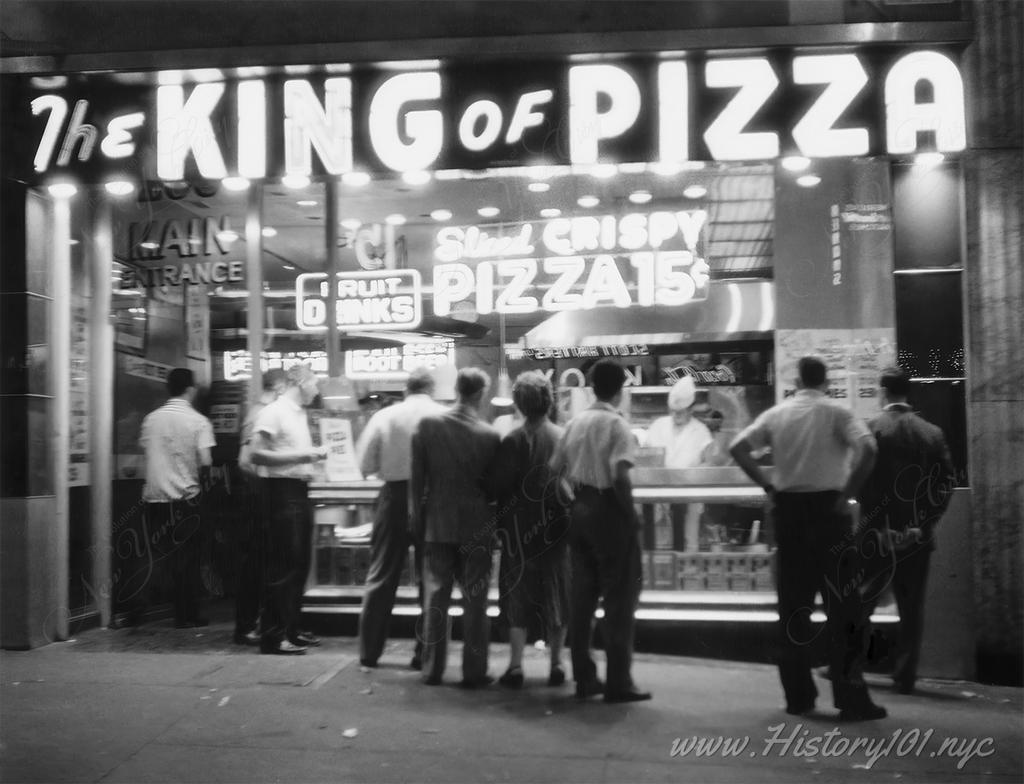
1955-1960 NYC: Architectural Marvels, Jazz's Rise, and Civil Rights Movement
The history of New York City between 1955 to 1960, experienced a transformative era that redefined its social, economic, and cultural landscapes. The completion of iconic structures like the Seagram Building in 1958 symbolized the city’s architectural and commercial growth, reflecting a post-war boom that propelled New York onto the global stage. This period also saw the burgeoning of the civil rights movement, with New York serving as a pivotal arena for activism that aimed to dismantle systemic racial barriers. The city’s diverse neighborhoods became melting pots of culture and political discourse, setting the stage for significant societal shifts.
During these years, New York’s cultural scene flourished, thanks in part to the expansion of arts institutions and the influx of artists and intellectuals from around the world. The Museum of Modern Art, for instance, became a beacon of contemporary art, hosting groundbreaking exhibitions that drew international attention. Meanwhile, the jazz clubs of Harlem and Greenwich Village nightspots buzzed with the creative energy of musicians like Miles Davis and John Coltrane, making the city the epicenter of the jazz revolution. This vibrant cultural milieu not only entertained but also sparked conversations on identity, freedom, and expression.
Economically, New York City navigated through challenges and opportunities alike. The post-war era’s prosperity led to increased urban development, yet also highlighted the stark inequalities and the need for housing and urban renewal projects. Initiatives such as the Lincoln Square redevelopment, initiated in the late 1950s, aimed to address these issues, though not without controversy and debates over urban planning and displacement. These discussions underscored the complexities of managing a city burgeoning with growth yet striving for social equity.
By the end of 1960, New York City had solidified its position as a global metropolis, characterized by its dynamic urban fabric, cultural richness, and socio-political activism. The lessons and legacies of this period continue to influence the city’s evolution, embodying a spirit of resilience and innovation. As New York marched into the 1960s, it carried with it the achievements and challenges of the preceding years, ready to face a new decade of change and progress.
1955-1960 Timeline of New York City’s History, USA
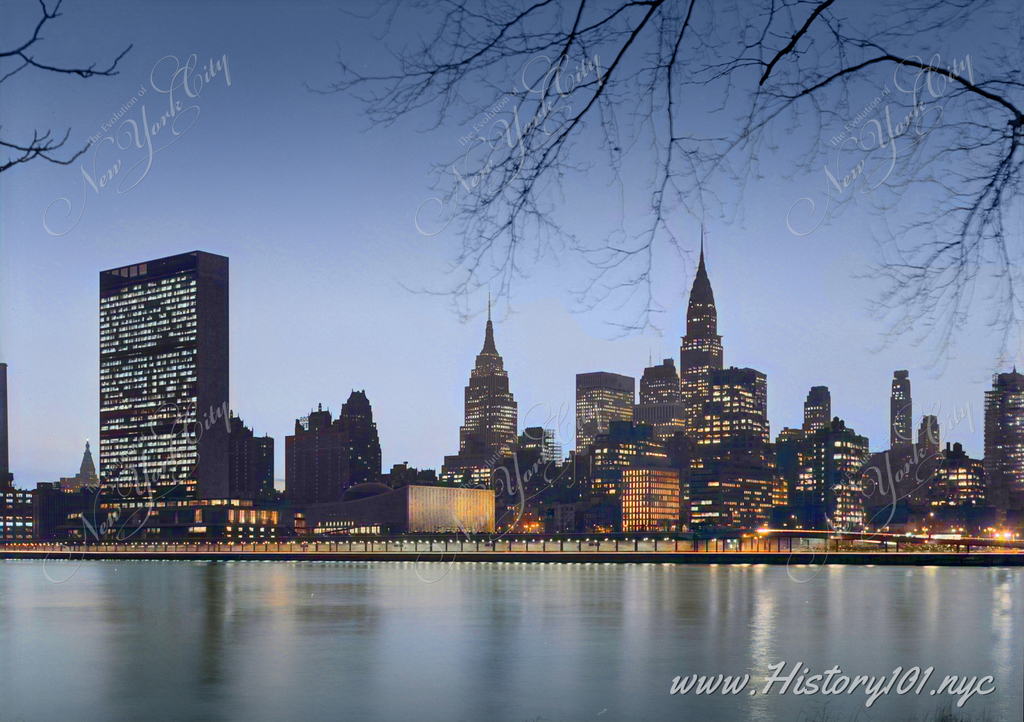
1957: Midtown Manhattan from Roosevelt Island
Panoramic photograph of Manhattan's skyline taken from Roosevelt Island, known at the time as "Welfare Island".
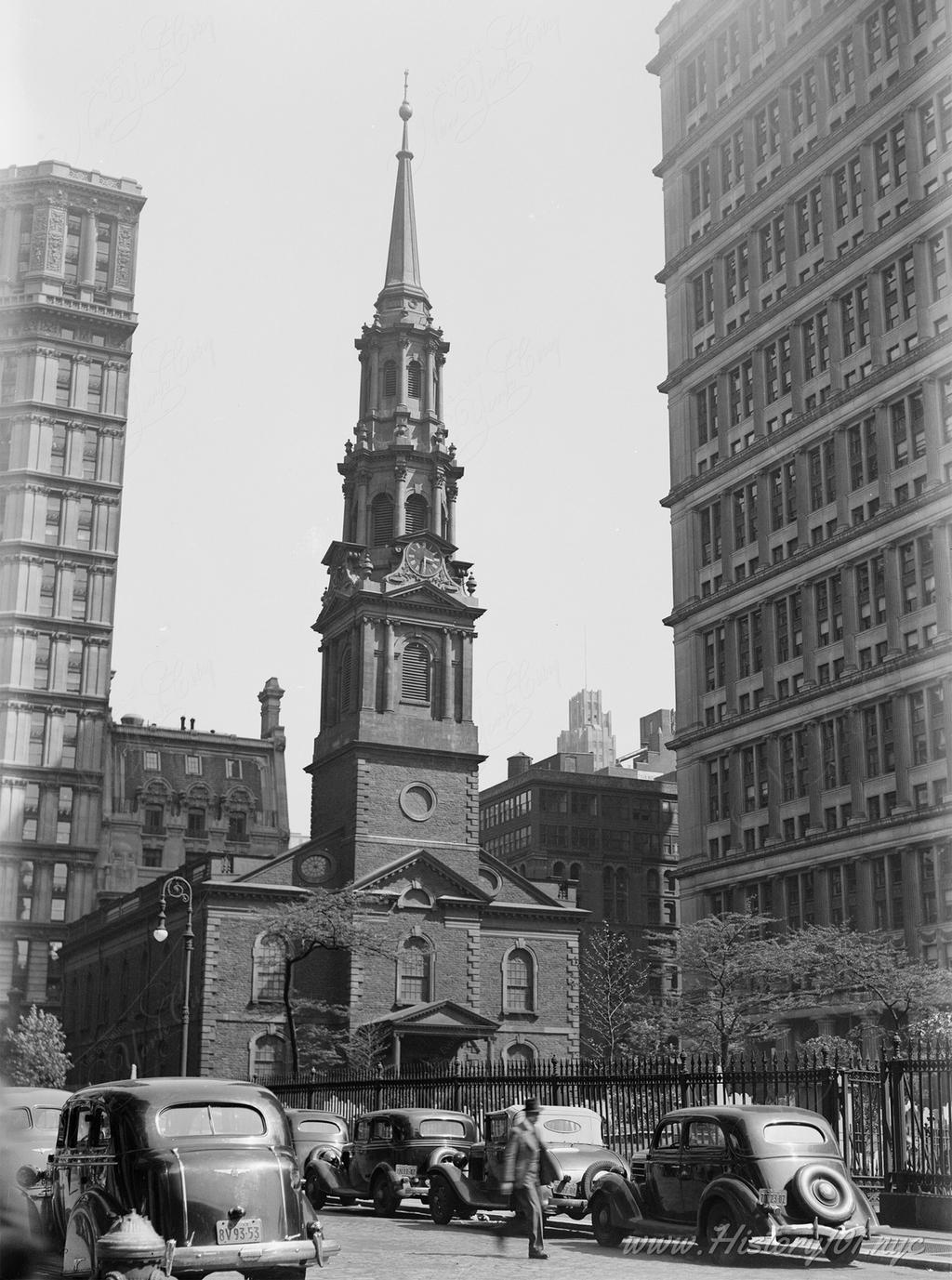
1959: Cars Parked Near Saint Paul's Chapel
Photograph of cars parked along Broadway & Fulton Street in front of St. Paul's Chapel in downtown Manhattan.
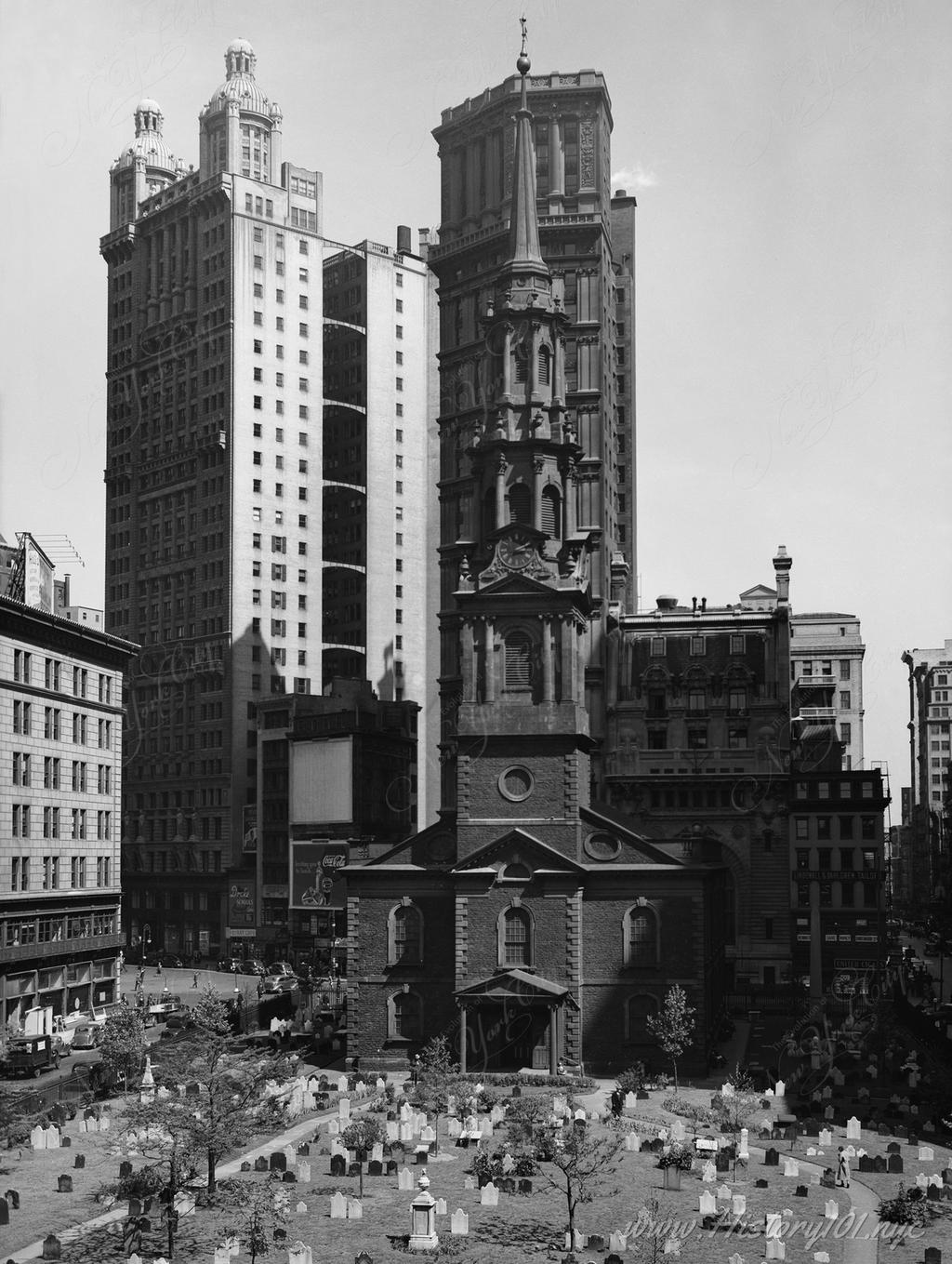
1959: Saint Paul's Chapel
Historic American Buildings Survey photograph showing the church yard of St. Paul's Chapel from the west, framed by Broadway & Fulton Streets.
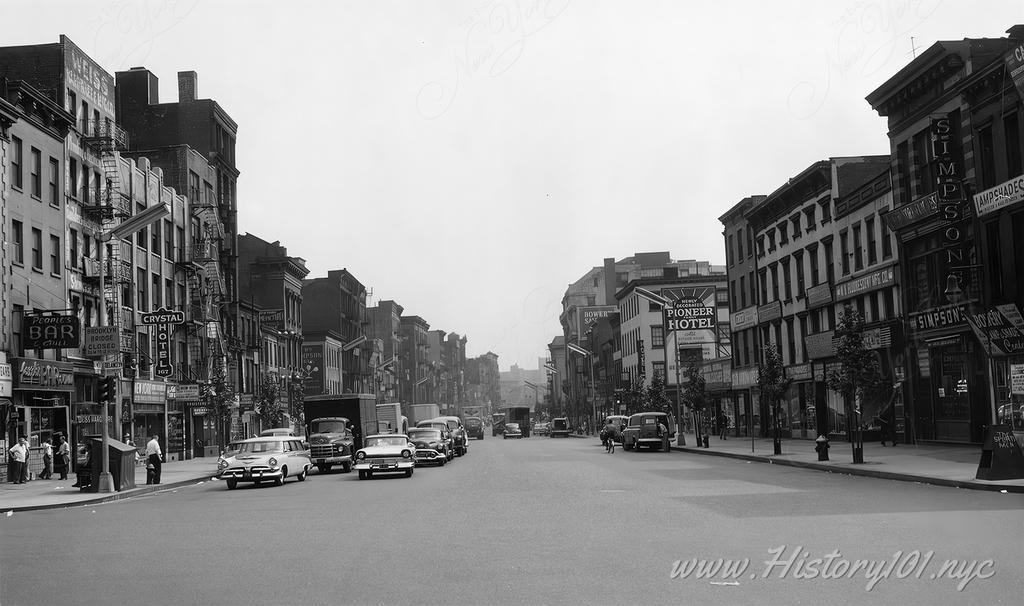
1957: The Bowery
Photograph of The Bowery and Delancey Street showing cars at a stoplight and signs for the People's Bar, and the Crystal Hotel and Pioneer Hotel in distance.
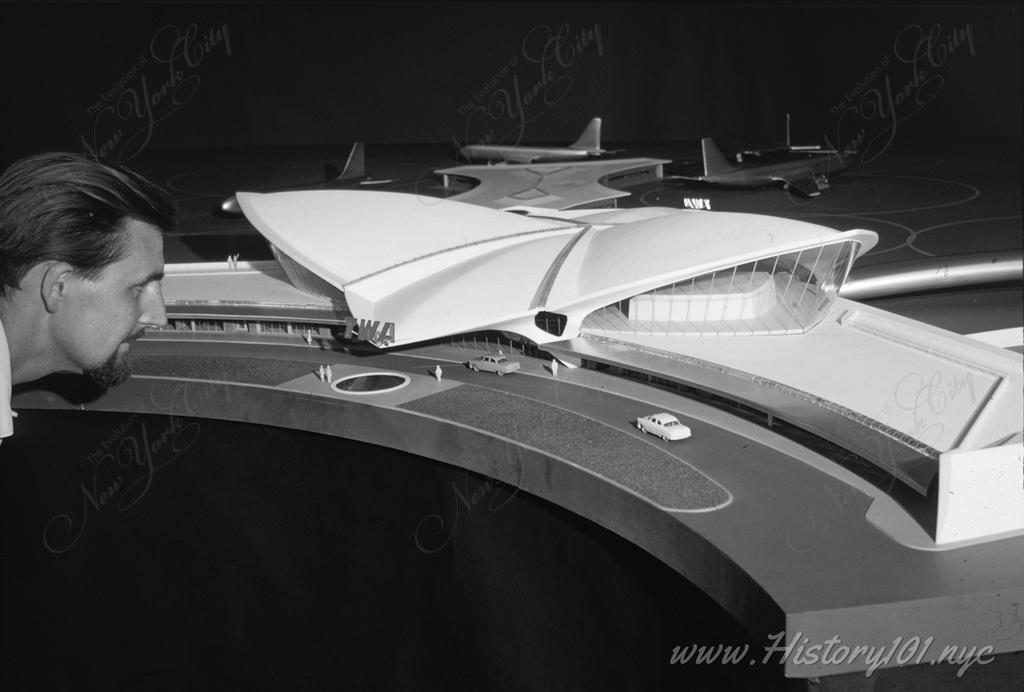
1956: Balthazar Korab with TWA model
Photograph of architect Balthazar Korab with a scale model of his proposed design for the Trans World Airlines Terminal and John F. Kennedy Airport in Queens.
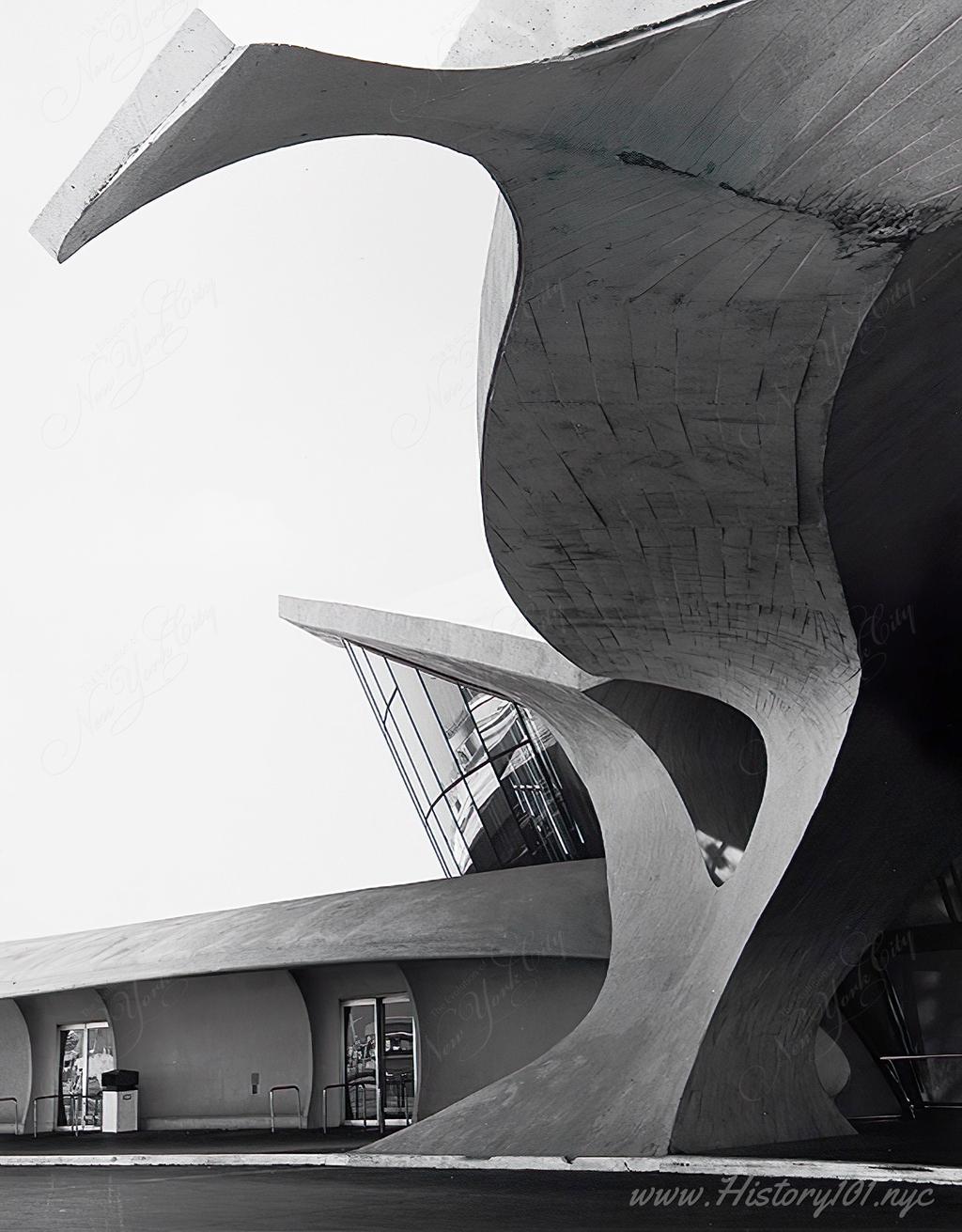
1955: TWA Terminal, Exterior Facade
Photograph of an exterior wall of the Trans World Airlines Terminal which highlights its mid-century modern aesthetic.
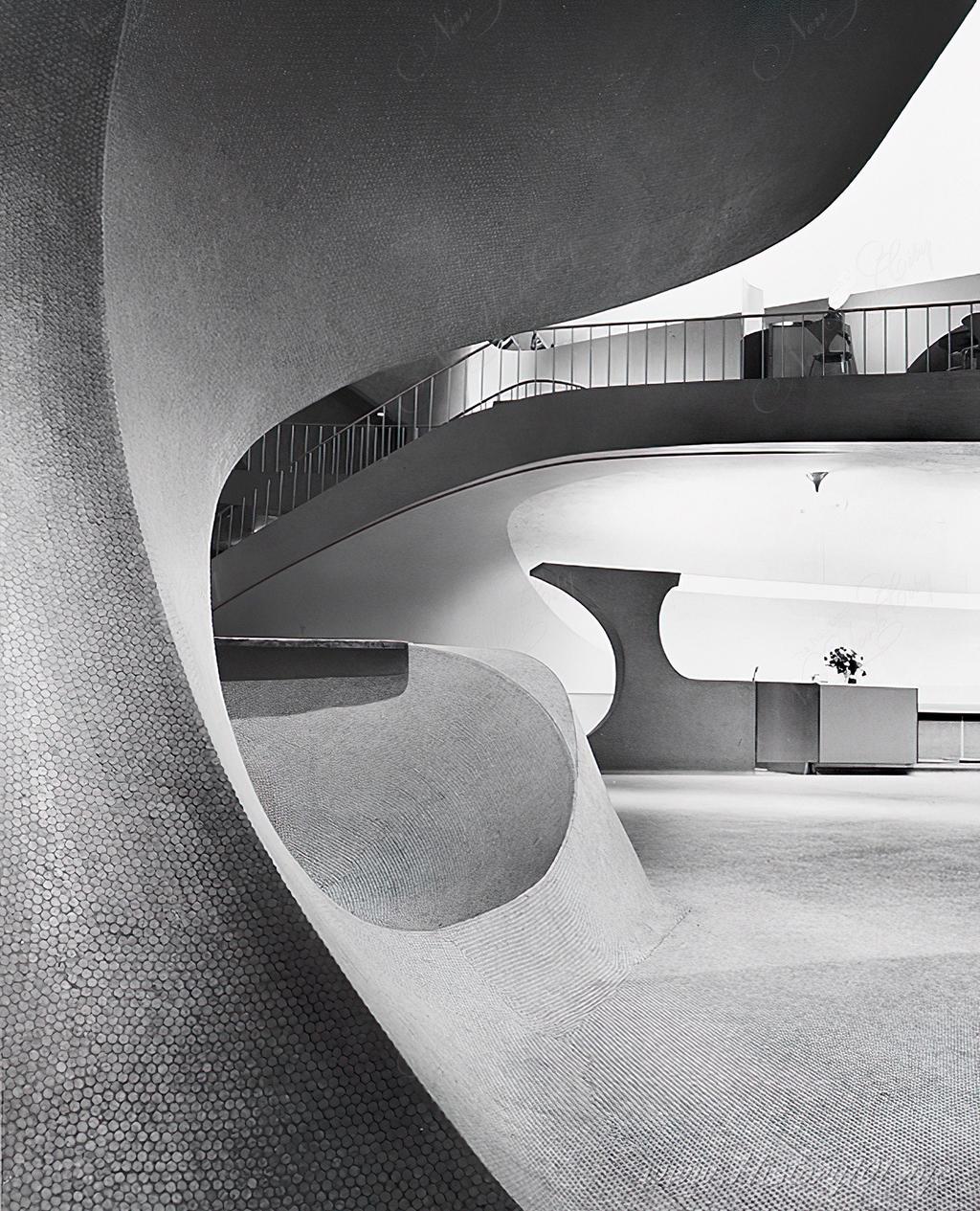
1955: TWA Terminal Ticket Counters
Photograph of TWA Terminal Interior. On the left we see the mezzanine support structure with ticket counters beyond the right.
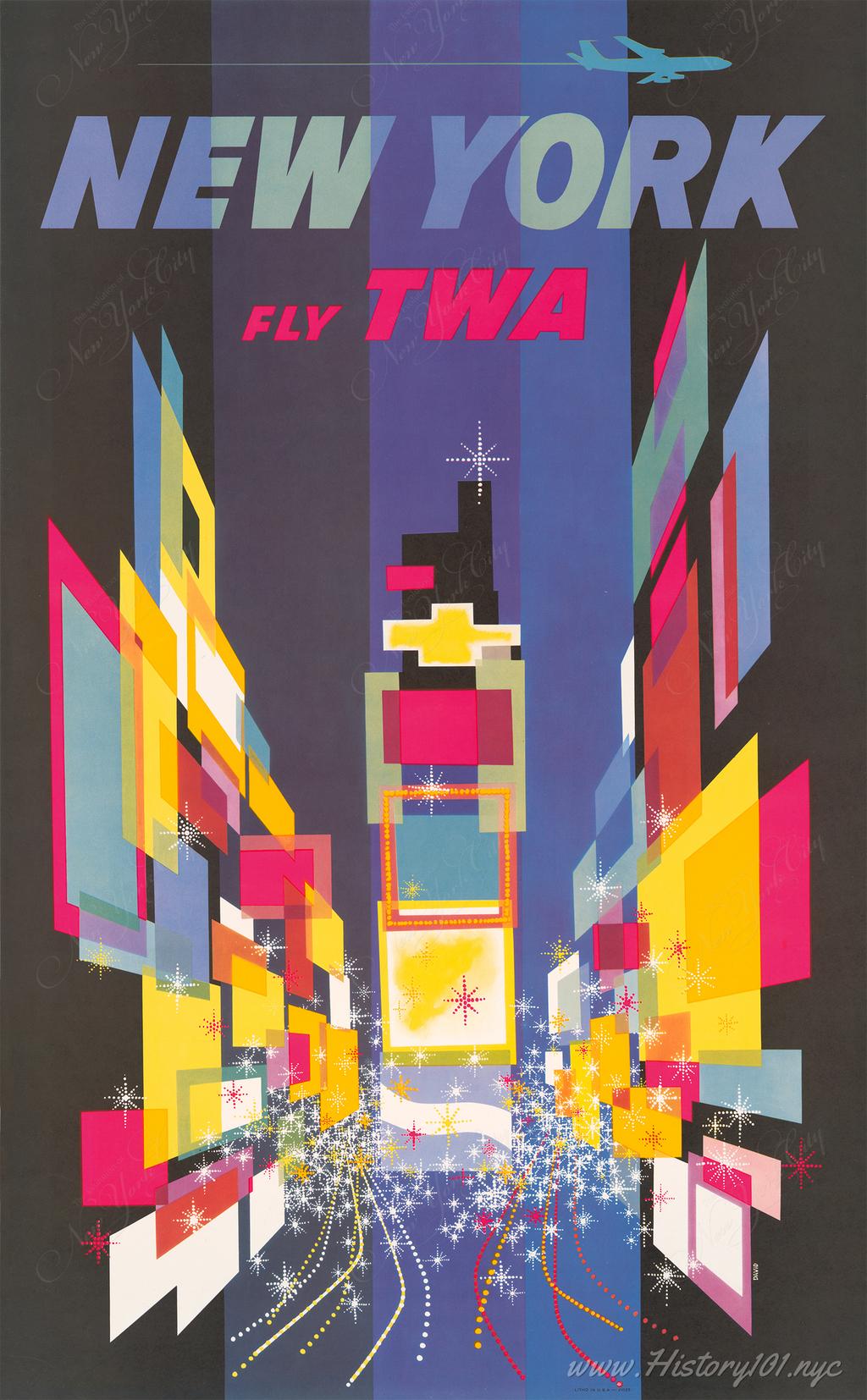
1956: Fly TWA Advertisement
Art poster featuring an abstract interpretation of Times Square in New York with a TWA jet and jetstream at the top of the image.
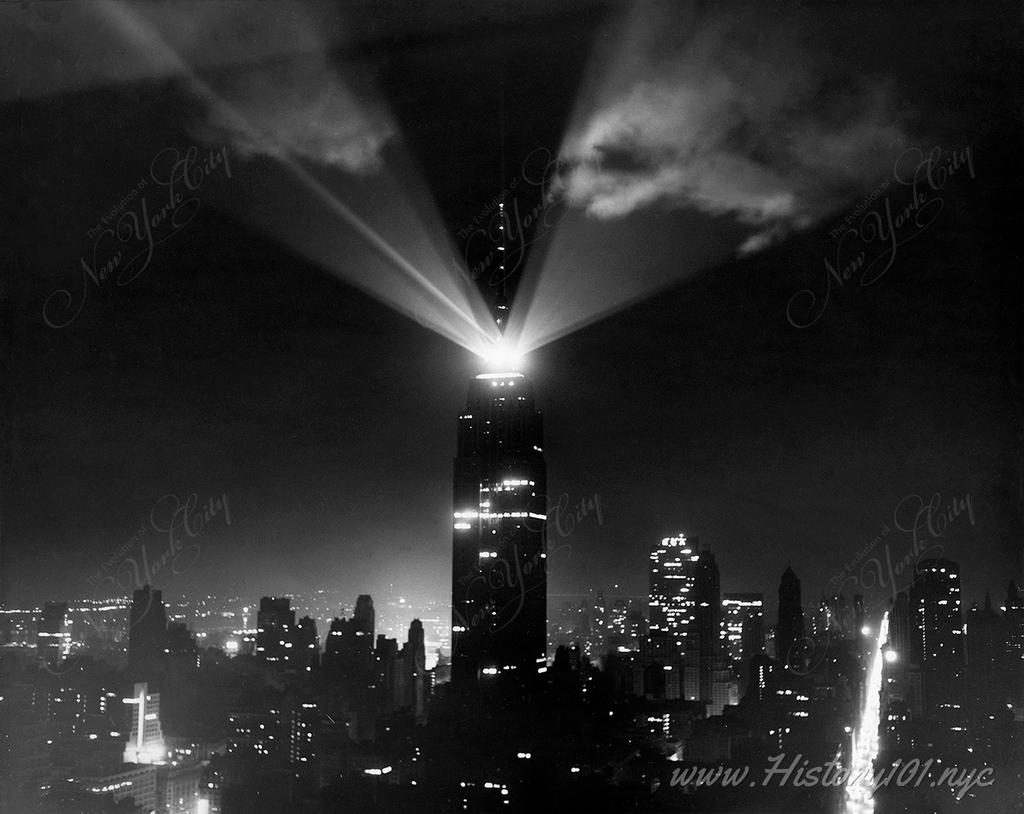
1956: A New Diamond in Manhattan's Sky
Photograph shows beacon lights beaming brightly from atop the Empire State Building at night illuminating the clouds in the sky.
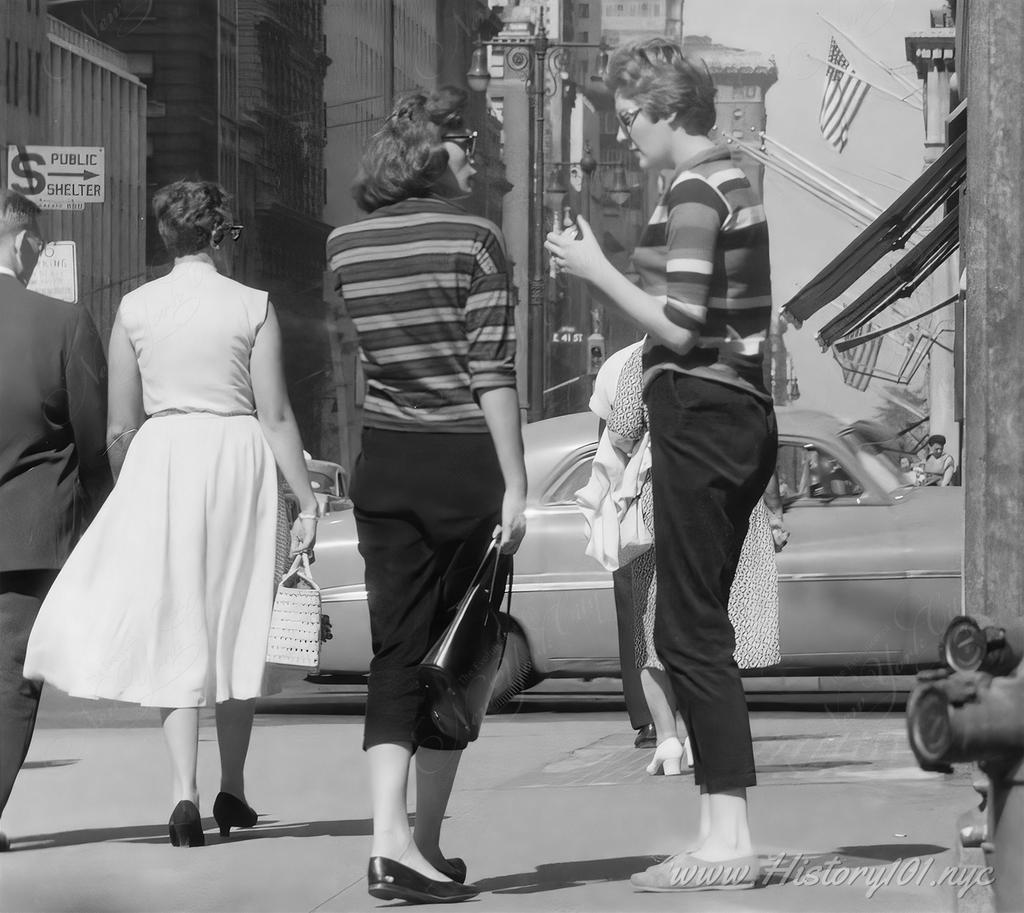
1956: Two Women Talking in Midtown Manhattan
Photograph of two women in striped sweaters chatting on a sidewalk corner near East 41st Street.
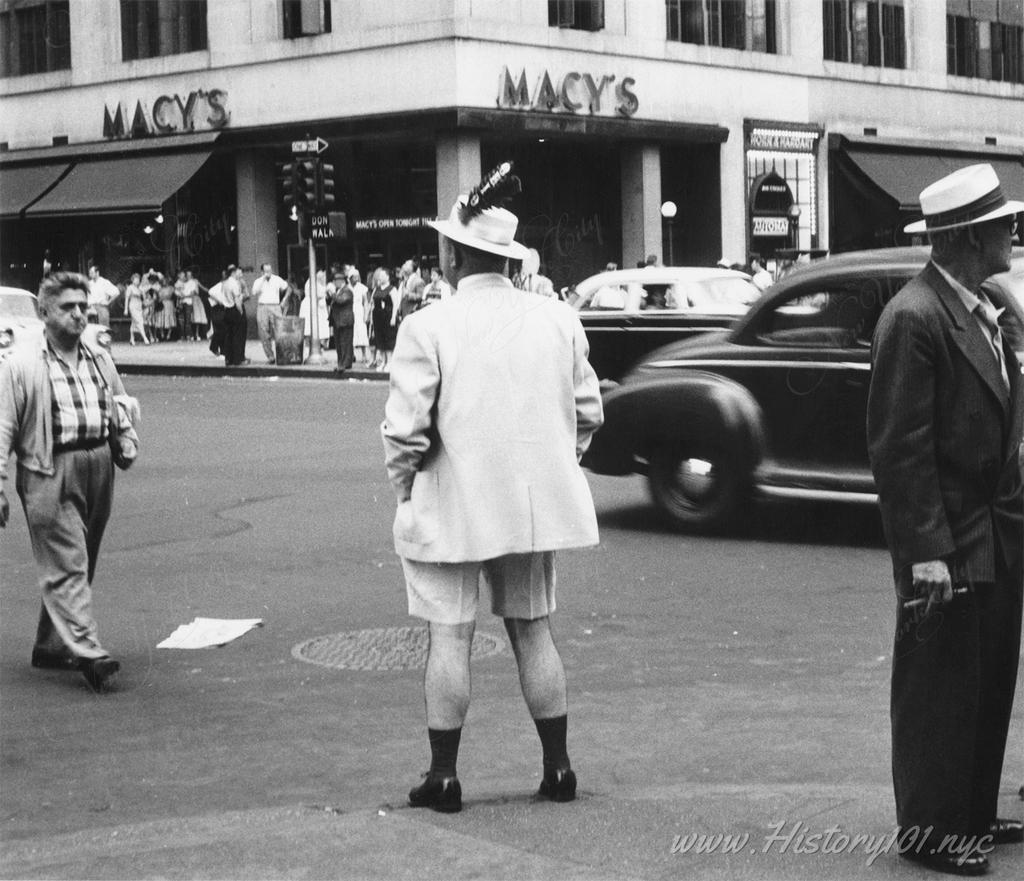
1957: Man Standing in Front of Macy's
Photograph of a man in shorts with feathered cap, standing on a street curb with Macy's department store in the background.
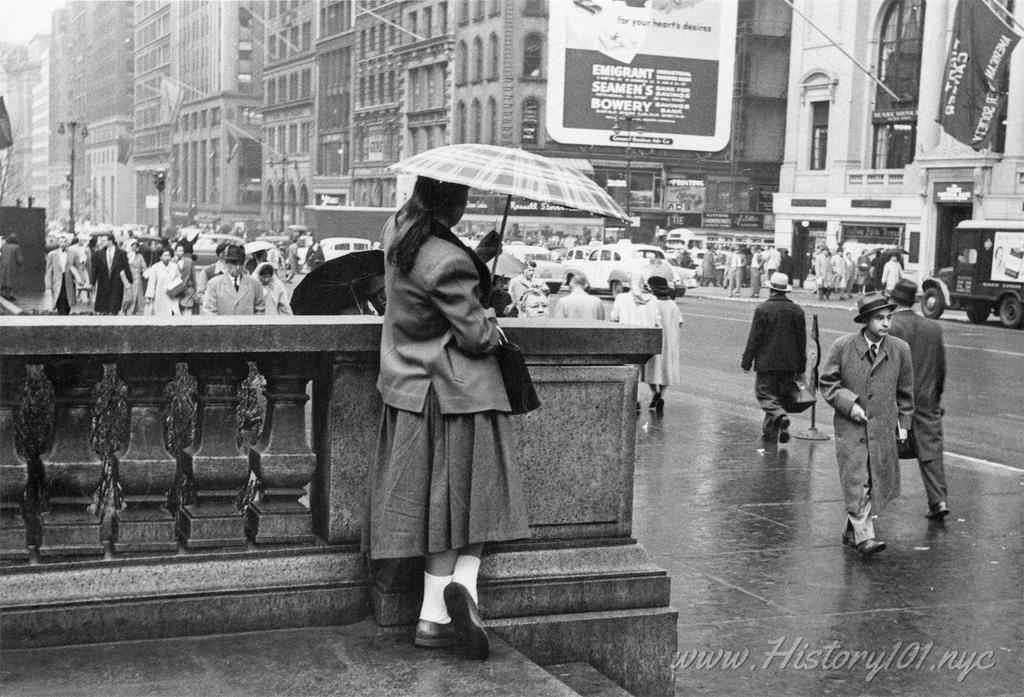
1955: Woman Holding an Umbrella
Photograph of a woman holding an umbrella and leaning on a bannister against a bustling backdrop of pedestrians, traffic, and storefronts.
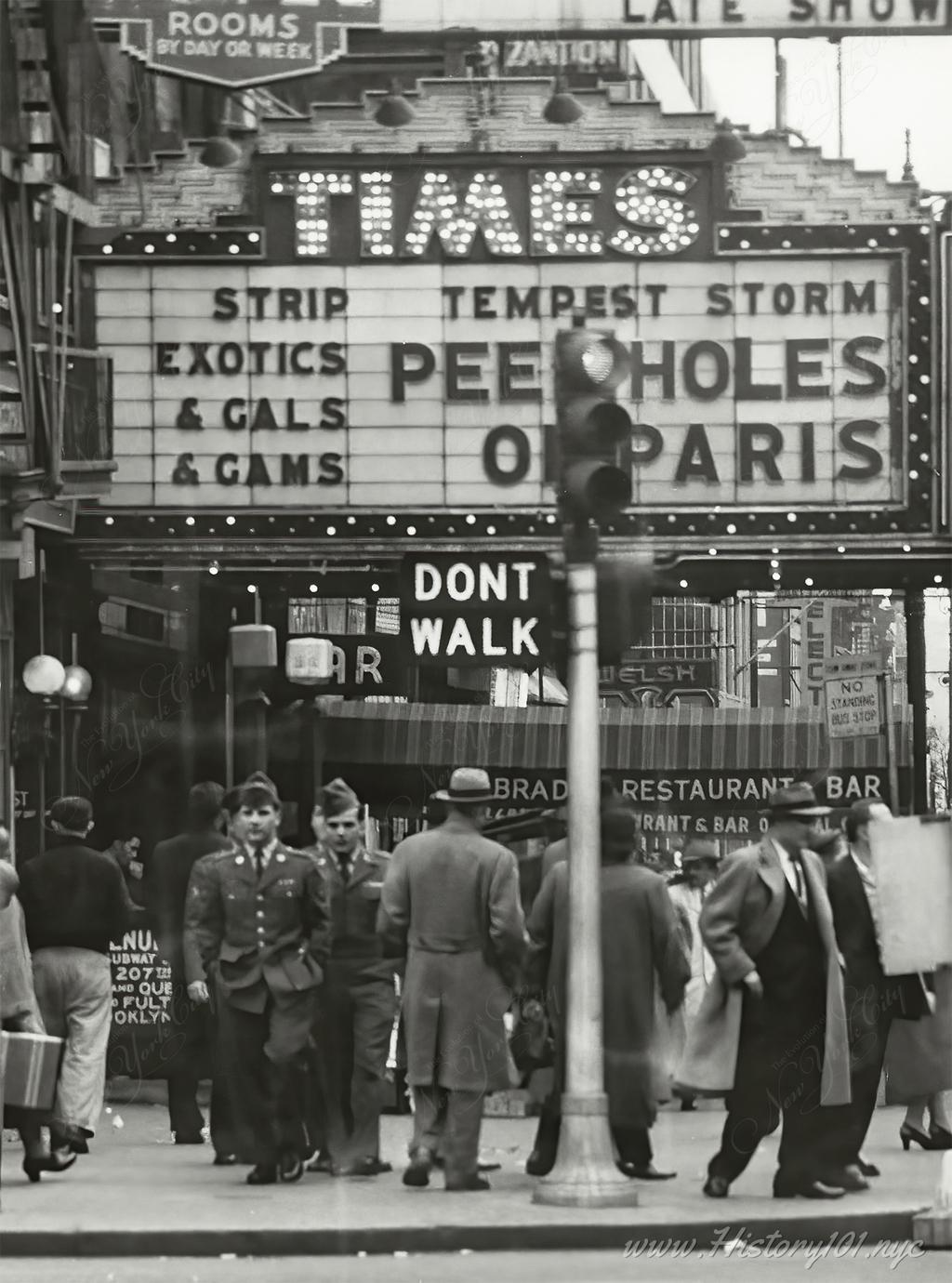
1956: Marquee in Times Square
Photograph of Marquee in Times Square - The neighborhood would become renowned for go-go bars and peep show establishments.
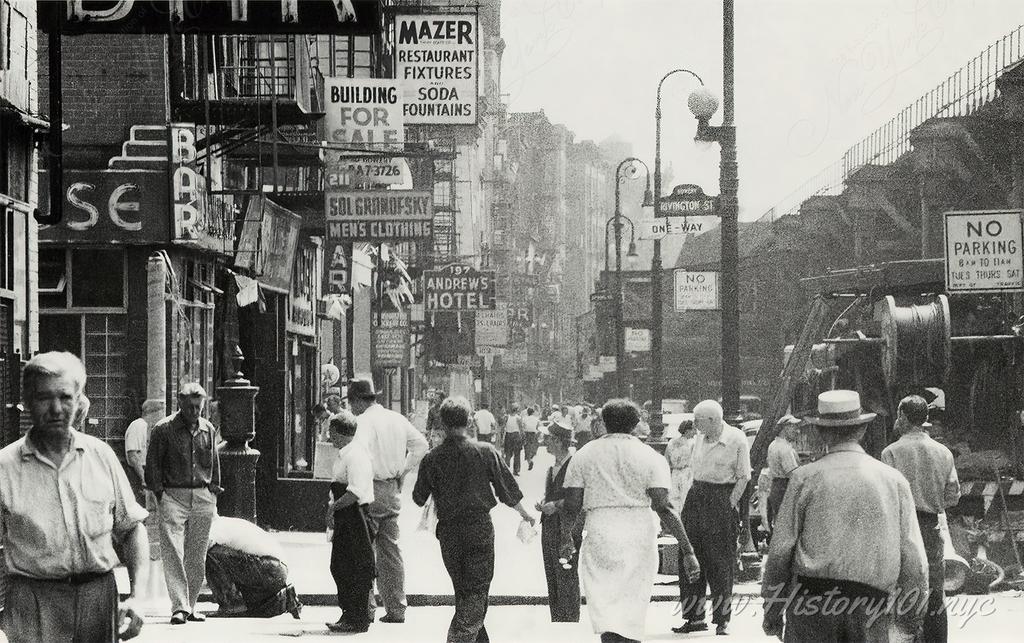
1955: Rivington Street Scene
Photograph of Rivington Street bustling with pedestrians against a backdrop of business signs and the local elevated railroad.
